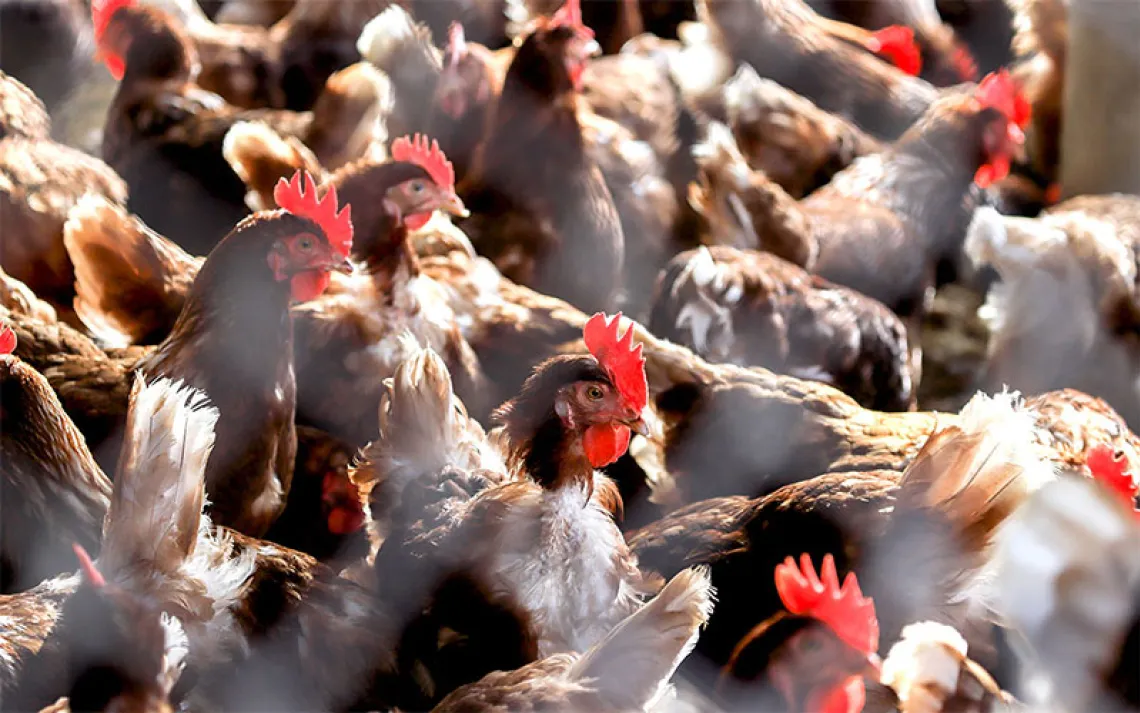Conflict Avoidance
Wind power is inexhaustable, clean, and virtually free—but still not perfect.

WIND POWER IS INEXHAUSTIBLE, clean, and virtually free—but still not perfect. When you compare its downsides to those of most other forms of power generation—from mercury and mountaintop removal to oil slicks and nuclear waste—wind looks pretty good. But it still requires major industrial operations with undeniable environmental effects. Wind turbines can be noisy. They can disrupt natural landscapes. Constructing them can damage wildlife habitats. And, sadly, their spinning blades can kill birds and bats.
Poor turbine designs and bad siting made the early days of wind power especially deadly. Particularly notorious was California's Altamont Pass Wind Farm, whose 4,930 aging turbines still kill an average of 67 protected golden eagles per year. It took three decades of lawsuits and the eventual intervention of California's attorney general to persuade Altamont's operators to agree to a settlement: NextEra Energy Resources will phase out half of the older turbines, with their metal lattice towers that provide inviting but deadly perches, by 2015. Replacement windmills will use smooth monopole towers with no places to perch. The company is also paying $2.5 million for raptor habitat restoration and monitoring to compensate for the continued loss of birdlife.
Altamont, happily, is an outlier. Most conflicts with birds can be averted by siting wind farms away from migratory routes or by curtailing their operations when birds are in the area. Many wind farm developers decide on sites and turbine design using voluntary federal guidelines; the Sierra Club and American Bird Conservancy are campaigning to make those guidelines mandatory.
When ranked against other threats to birds, however, wind is trivial. A 2007 report by the National Research Council found that turbine collisions account for only 3 out of 100,000 human-caused bird deaths. Birds are killed in numbers many orders of magnitude greater by collisions with buildings and power lines, poisoning from pesticides, and predation by domestic cats.
Threatened and endangered bird populations can ill afford even trivial losses, though. Concern over the fate of the endangered whooping crane—of which fewer than 450 are known to remain in the wild—led U.S. Fish and Wildlife officials to compel wind farm operators in the Dakotas to employ spotters who can shut down spinning turbines if any cranes are seen during migration season.

Sign up to receive Sierra News & Views
Get articles like this one sent directly to your inbox weekly.
With this action you affirm you want to receive Sierra Club communications and may vote on policy designated by the Sierra Club Board.
Even fewer California condors—perhaps 200—ride the thermals of central California, above mountain passes and ridgelines that are also coveted by the growing wind industry. Last year the Sierra Club, the Center for Biological Diversity, and Defenders of Wildlife sued to halt construction of NextEra Energy's proposed 300-megawatt North Sky River project in prime condor habitat in the Tehachapi Mountains. Elsewhere in the Tehachapis, wind developer Terra-Gen is experimenting with a radar system that could automatically shut down nearby turbines when condors are detected.
Cutting-edge technology is also being deployed by the Great Lakes Wind Collaborative, an organization of wind developers, environmental groups (including the Sierra Club), and government agencies seeking ways to minimize avian impacts from large, utility-scale wind projects. The group employs aerial surveys, onshore spotters, and radar in an attempt to identify areas with the least potential for conflict with birds. One part of the project, funded by the Sierra Club, is a buoy regularly anchored in Lake Michigan that's outfitted with sensors able to detect the sounds of birds and even bats. It's heard little thus far, and continued silence could pave the way for a major offshore wind development on the shallow midlake plateau—far from conflict with bird or beast.
 The Magazine of The Sierra Club
The Magazine of The Sierra Club



